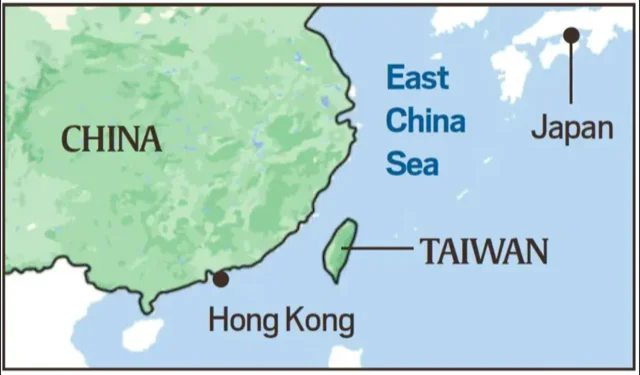UPSC Articles
Oct 12: China-Taiwan Rift – https://youtu.be/DwHBysl5uNw
INTERNATIONAL
- GS-2: Effect of policies and politics of developed and developing countries on India’s interests
China-Taiwan Rift
Context: Democratically ruled Taiwan has complained of stepped-up military and political pressure from Beijing to force it to accept Chinese rule.
- Over the last weekend, Chinese President Xi Jinping reiterated a vow to reunify Taiwan.
- This was followed by People’s Liberation Army Daily’s official newspaper in a brief report on its Weibo microblogging account, saying China’s military had carried out beach landing and assault drills in the province directly across the sea from Taiwan, though it did not link these exercises to current tensions with Taipei.
- According to reports China’s air force has also carried out a series of aerial intrusions into Taiwan’s Air Defence Identification Zone recently with a record 38 aircraft on October 1, when China marked its National Day, followed by 39 on October 2, 16 on October 3 and 56 on October 4.
- While Taiwan’s Defence Minister described the current tensions between the two nations as the worst in 40 years, Taiwanese President has said that her country will not be forced to bow to China.
- Also, Taiwan is entirely dependent on the US for its defence against possible Chinese aggression — and that is why every spike in military tensions between China and Taiwan injects more hostility in the already strained relationship between Washington and Beijing.

Image source: https://images.indianexpress.com/2021/10/map-china.jpg
Background
- Taiwan, officially known as the Republic of China (ROC) (earlier known as Formosa), is an island off the southern coast of China that has been governed independently from mainland China since 1949.
- The People’s Republic of China (PRC) views the island as a province, while in Taiwan—a territory with its own democratically elected government that is home to twenty-three million people—political leaders have differing views on the island’s status and relations with the mainland.
- The PRC asserts that there is only “one China” and that Taiwan is an inalienable part of it. Beijing says Taiwan is bound by an understanding reached in 1992 between representatives of the Chinese Communist Party (CCP) and the Kuomintang (KMT) political party then ruling Taiwan.
- Referred to as the 1992 Consensus, it states that there is only “one China” but allows for differing interpretations, by which both Beijing and Taipei agree that Taiwan belongs to China, while the two still disagree on which entity is China’s legitimate governing body.
- The tacit agreement underlying the 1992 Consensus is that Taiwan will not seek independence.
- In Taiwan, the Chinese government’s objective has long been what it calls “peaceful reunification” — “reunification” even though Taiwan has never been under the jurisdiction or control of the People’s Republic of China or the Chinese Communist Party.
- To achieve that goal, Beijing has for years tried to simultaneously coax and coerce Taiwan’s adhesion with both the promise of economic benefits and military threats.
Challenge for the US
- President Joe Biden has so far walked a thin line between pledging support for Taiwan, and keeping the lid on tensions with Beijing.
- After speaking with Xi earlier this month, he said they had agreed to abide by the “Taiwan Agreement”, under which US support for the “One China Policy” is premised on Beijing not invading Taiwan.
- The AUKUS pact among the US, UK, and Australia, under which Australia will be supplied with nuclear submarines, has imparted a new dimension to the security dynamics of the Indo-Pacific. Taiwan has welcomed the pact, while China has denounced it as seriously undermining regional peace.
Implications for India
- India should review its One China Policy — it should use the Tibet card, and develop more robust relations with Taiwan to send a message to Beijing.
- India and Taiwan currently maintain “trade and cultural exchange” offices in each other’s capitals. In May 2020, the swearing-in of Tsai was attended virtually by BJP MPs Meenakshi Lekhi (now MoS External Affairs) and Rahul Kaswan. In 2016, New Delhi had dropped plans to send two representatives for Tsai’s first inaugural at the last minute.
- Talks with Taipei are ongoing to bring a $7.5-billion semiconductor or chip manufacturing plant to India. Chips are used in a range of devices from computers to 5G smartphones, to electric cars and medical equipment (the need to build a “safe supply chain for semiconductors”).
Can you answer the following question?
What is the reason for the long-running tensions between Beijing and Taipei? What implications does it have for the Indo-Pacific region and for India?














